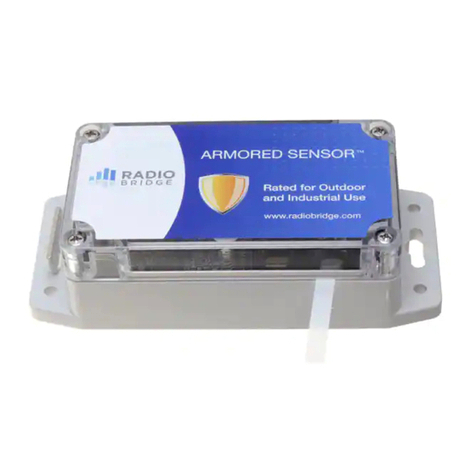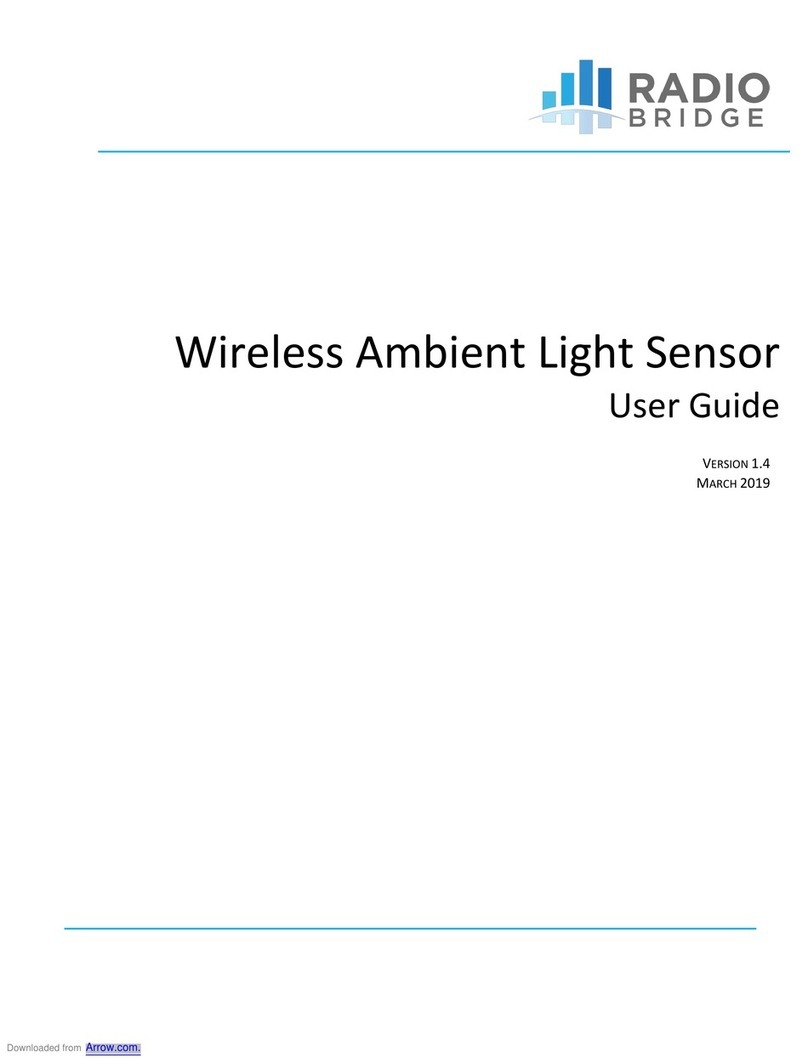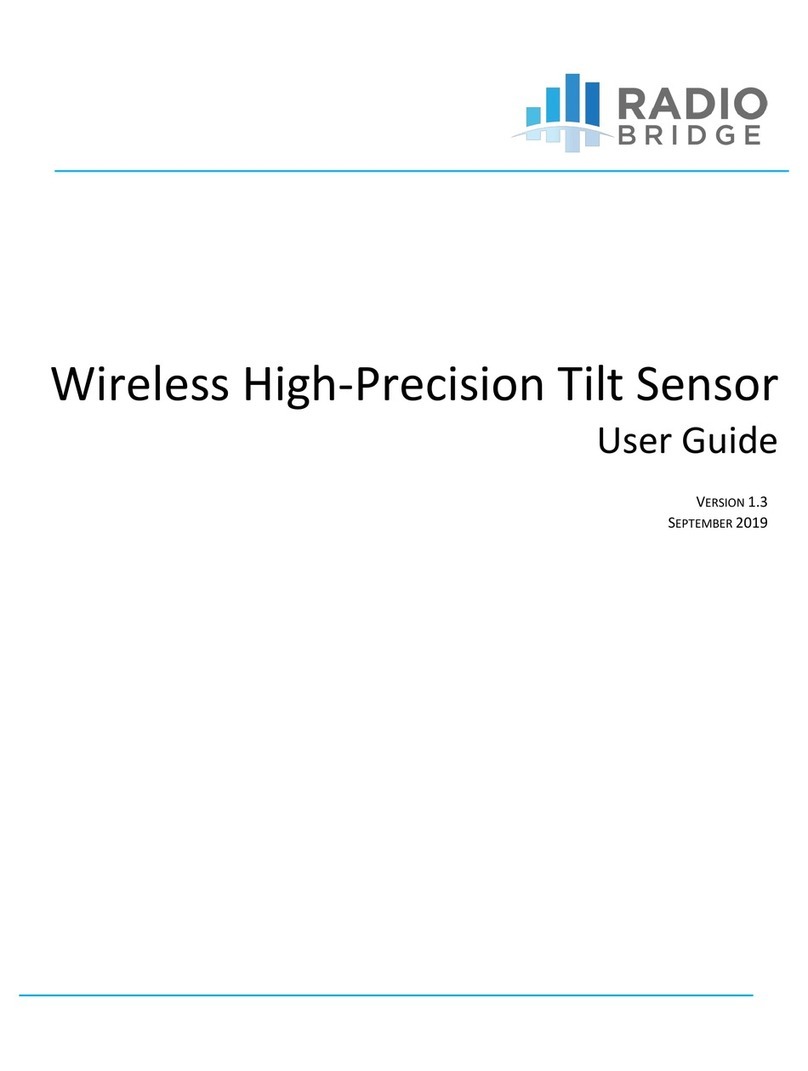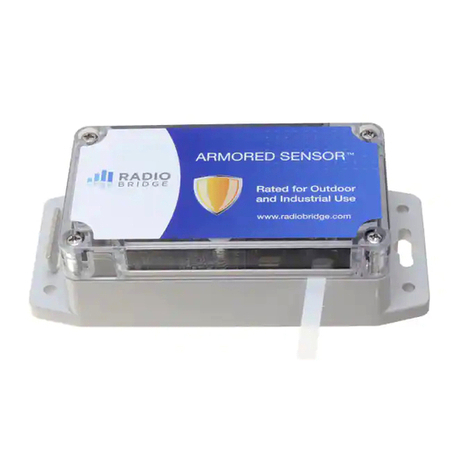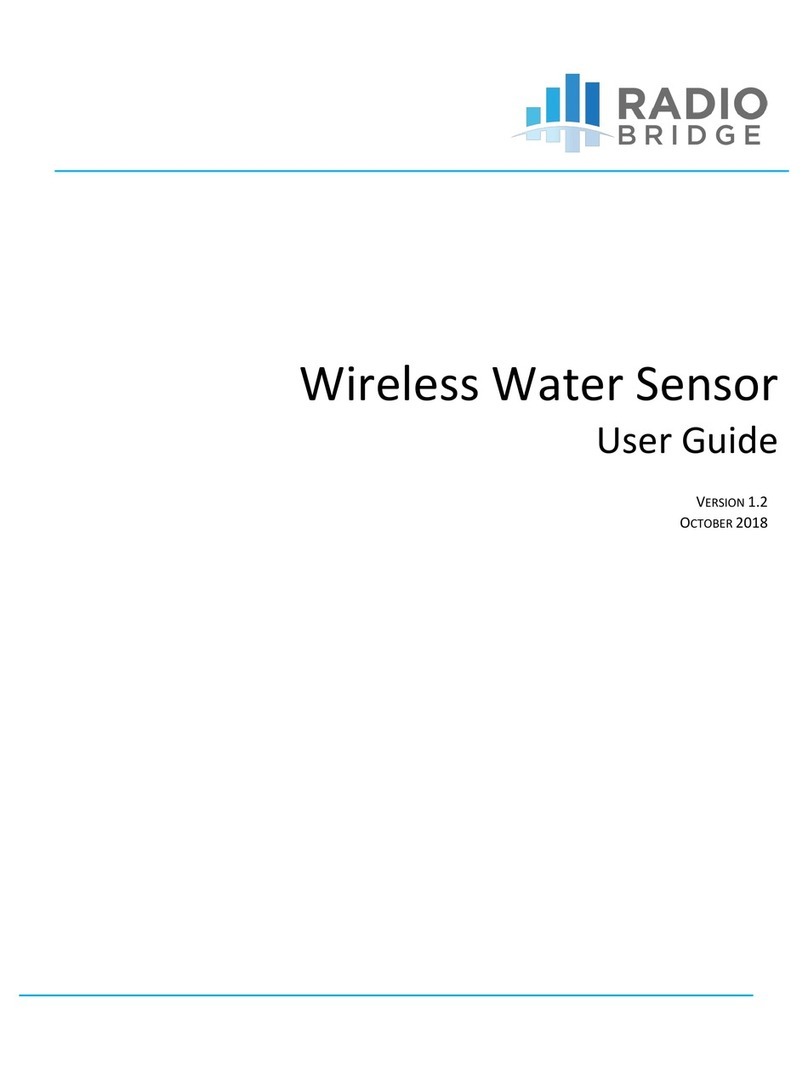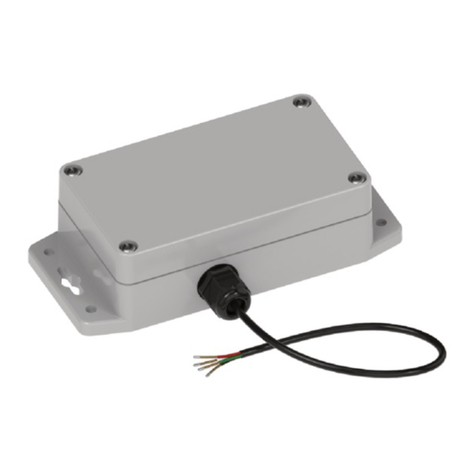WIRELESS AMBIENT LIGHT SENSOR
COPYRIGHT ©2019, RADIO BRIDGE INC.WIRELESS AMBIENT LIGHT SENSOR PAGE 1OF 14
TABLE OF CONTENTS
1. QUICK START....................................................................................................................... 2
2. OVERVIEW .......................................................................................................................... 2
2.1. Sensor Overview ........................................................................................................................2
2.2. Revision History .........................................................................................................................3
2.3. Document Conventions ..............................................................................................................3
2.4. Part Numbers.............................................................................................................................3
3. TECHNICAL SPECIFICATIONS................................................................................................ 4
3.1. Absolute Maximum Ratings........................................................................................................4
4. BATTERY LIFE....................................................................................................................... 5
5. TEST MESSAGES .................................................................................................................. 6
6. MESSAGE PROTOCOL .......................................................................................................... 6
6.1. Common Messages.....................................................................................................................6
6.2. Uplink Messages ........................................................................................................................7
6.3. Downlink Messages....................................................................................................................7
6.3.1. Threshold Mode..................................................................................................................8
6.3.2. Report on Change Mode......................................................................................................9
6.3.3. Periodic Reports..................................................................................................................9
7. MECHANICAL DRAWINGS...................................................................................................11
7.1. INDOOR RBSX01 SENSORS...............................................................................................11
7.2. ARMORED OUTDOOR/INDUSTRIAL RBSX06 SENSORS ......................................................12
8. REGULATORY AND COMPLIANCE........................................................................................13
8.1. Federal Communications Commission (FCC) ..............................................................................13
8.2. Harmonized Commodity Description (HS Code).........................................................................13
8.3. Export Control Classification Number (ECCN).............................................................................13
9. CUSTOMER SUPPORT .........................................................................................................14
10. DISCLAIMERS...................................................................................................................14
11. LEGAL NOTICES ...............................................................................................................14
12. TRADEMARKS AND COPYRIGHT .......................................................................................14
